|
Grand Canyon's Museum Collection Curates Rare Minerals from Grandview Mine The mineral grandviewite is only known from Grand Canyon Allyson Mathis 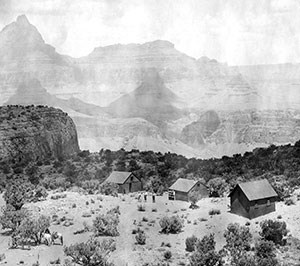
Grand Canyon Nat. Park Museum Collection #08808 The mine's ore was assayed at more than 70% pure copper. While all mining-related activities ceased by 1907 after the price of copper collapsed, the former mine remains of great scientific value because of its assemblage of rare minerals, including grandviewite. Grandviewite, a turquoise-colored mineral known only from the Grandview Mine was not formally named and described until 2007.
In 2010, more than 1,200 mineral specimens from Grandview Mine were added to the Grand Canyon National Park's Museum Collection. Geologist-in-Park Janelle Rohweller identified and cataloged these specimens last summer during an internship through GeoCorps America.

Grand Canyon Nat. Park Museum Collection #08805 The ore consisted mostly of copper sulfate minerals including cyanotrichite, brochantite, and chalcoalumite, along with copper carbonates such as azurite and malachite. Like many historic mines in Grand Canyon, including the Orphan Mine, the mineralized zone is in a breccia pipe, which is a cylindrical mass of highly fractured rock. In the Grand Canyon region, breccia pipes formed from the collapse of solution caverns in the Redwall Limestone. The highly porous brecciated rock in these features was mineralized by copper- and/or uranium-bearing fluids. 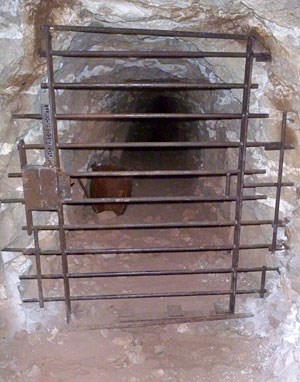
nps science & resource management photo In 2009, the National Park Service, with the support of Bat Conservation International, installed bat gates in three adits to prevent people from entering the hazardous mine while still providing access for Townsend's big eared bats who use the Grandview Mine as a nesting colony site. Additional closure work was accomplished in 2010 under funding provided through the American Recovery and Reinvestment Act (ARRA). Abandoned mineral lands pose significant hazards to human health and safety because of the risk of collapse, rotting timbers, and other dangers. 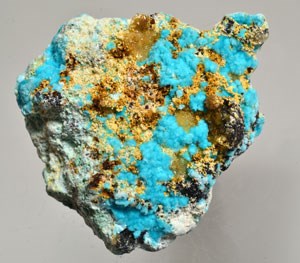
NPS Photo by Michael Quinn Grandviewite is a light blue-green mineral that occurs in small tuffs of radiating needle-like crystals. It had been described as an unknown mineral in 1971 by a mineralogist who had a research permit from the park, but it wasn't until 2007 that it was described as a new mineral species accepted by the International Mineralogical Association. Grandviewite has a chemical formula of Cu3Al9(SO4)2(OH)29. It grows in close association with other copper aluminum sulfate minerals such as chalcoalumite and cyanotrichite. 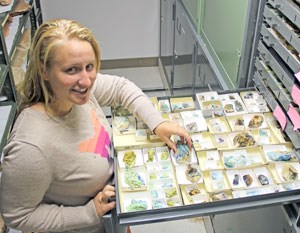
nps photo by Allyson mathis Grand Canyon Physical Science Program Manager Deanna Greco said, "GeoCorps America enabled the park to identify and describe these specimens. It was great to bring someone onboard with mineralogical expertise and have them be dedicated to cataloging these specimens. 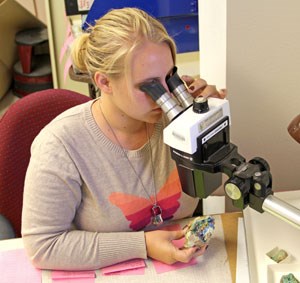
NPS photo by allyson mathis The rare minerals from the Grandview Mine are just one of the diverse geologic resources in Grand Canyon in addition to the incredible scenery and vast record of geologic history. It is important that we inventory, monitor and protect all geologic resources in the park, including minerals, springs, fossils and caves." 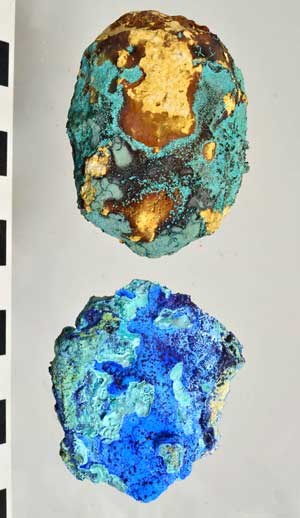
NPS PHOTO BY Michael Quinn Because several methods for mineral identification are inherently destructive, Rohweller was not able to definitively identify all mineral species included in the Grandview Mine specimens. There may be additional minerals new to science, including possible arsenate minerals, among the collection. These samples, which include at least 18 specimens that contain grandviewite, are part of the permanent curation at Grand Canyon National Park's Museum Collection. View more photos of the mineral specimens here: Note: Collection of, unauthorized removal, possession of, and sale or commercial use of rocks, minerals, and paleontological specimens, for either recreational or educational purposes, is generally prohibited in all units of the National Park System (36 C.F.R. § 2.1(a)). Violators of this prohibition are subject to criminal penalties. Anyone with information about illegal activities or who would like to report suspicious activity in Grand Canyon National Park should call 1-928-638-7805. You may speak directly to a criminal investigator or remain anonymous when reporting these activities. References: Colchester, D. M., Klish, D. R., Leverett P., and Williams P. A., 2008, Grandviewite, Cu3Al9(SO4)2(OH)29, a new mineral from the Grandview mine, Arizona, USA: Australian Journal of Mineralogy, v. 14, p. 51-54. Leicht, W., 1971, Minerals of the Grandview mine: The Mineralogical Record, v. 2, p. 214 - 221. Return to the Canyon Sketches eMagazine Home Page |
Last updated: February 24, 2015
